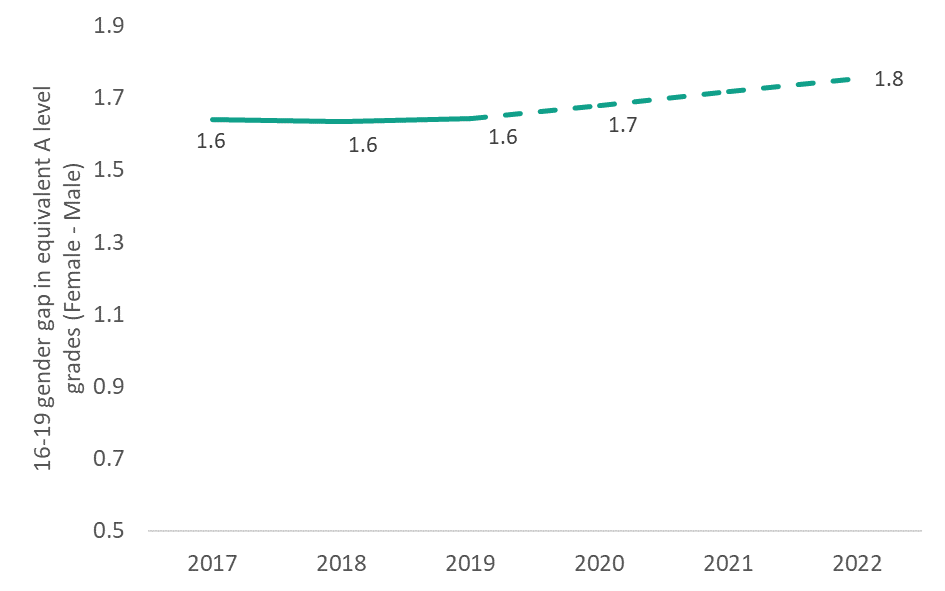Gender
Figure G1: Females students achieve higher grades than male students, and this gap widened since 2019

Female students have higher attainment than male students in the 16-19 phase. Although the gender gap is not as wide as the disadvantage gap (3.5 grades), it is still pronounced at just under two grades. The move away from formal examinations during the pandemic appeared to benefit female students more than male students. We therefore saw a widening of the gender gap occur under CAGs and TAGs. In 2022, female students were 1.8 grades behind male students, on average over their best three qualifications, compared to 1.6 grades in 2019. Unlike our disadvantage gap findings, it is less clear cut that the 2022 grading processes, which were partially linked to outcomes in 2021, should have preserved the differences by gender that arose under CAGs and TAGs.
